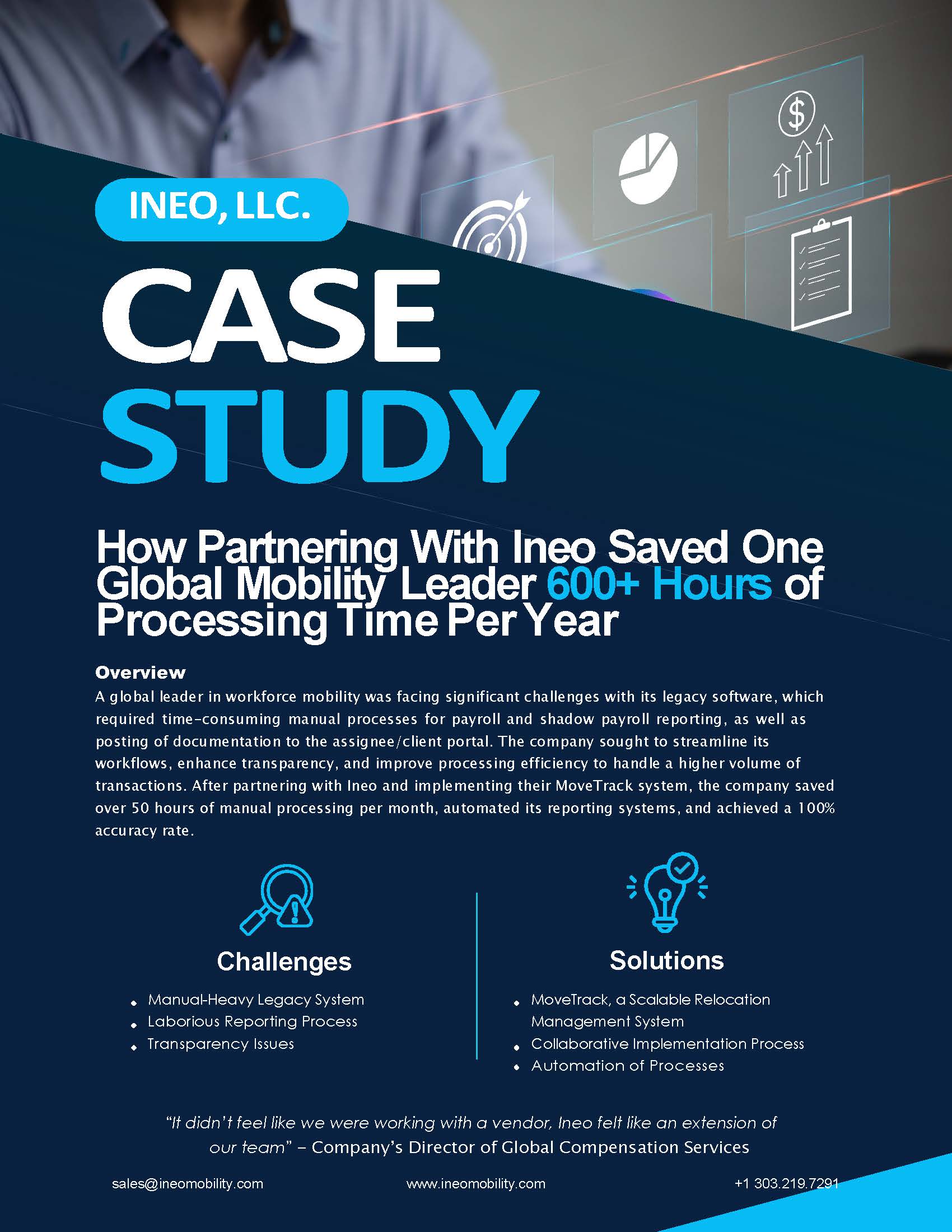Hidden Compliance Costs of Managing a Hybrid Workforce

With remote work gaining more traction in recent years, and ultimately accelerated by the pandemic, it’s also opened up opportunities for employees to embrace the “work from anywhere” model. As the needs of the modern workforce continue to shift, a new work model has formed: hybrid work. Hybrid employees work from multiple locations and may even travel from time to time.
In fact, a recent Accenture report found that 85% of employees prefer the hybrid model.
While hybrid work is proving to be a preferred and permanent fixture across organizations, there are hidden compliance costs of managing a hybrid workforce that mobility managers need to be aware of.
Compliance costs of managing a hybrid workforce
Location
When an employee is either fully remote or working full-time in-office, mobility managers have the luxury of knowing exactly where they are at all times. Hybrid employees, on the other hand, work from multiple locations and may even travel from time to time. They may be in the office for a couple days a week, working from home one day, or even working remotely from another state part-time.
This understandably becomes a challenge for mobility managers when trying to manage tax compliance.
The first way to remedy this is by figuring out exactly where employees are located, including all of their possible locations if they plan on being hybrid. It’s essential for this information to be communicated to payroll so they can ensure they’re withholding the right amount of taxes. One way to do this is through a polling activity that has employees determine answers to these questions. It’s also a good idea to encourage employees to provide timely updates if and when they plan to work from a different location.
Issues may come up if employees are working in locations where the company does not have nexus or proper reporting set up at the corporate level. Therefore, if an employee needs withholding or tax payments made in a new location, it’s the responsibility of the company to research the requirement and properly report any allocable revenue for corporate tax compliance purposes.
While this may be outside of the scope that you deal with on a day to day basis, this is one of the risks you take on if a hybrid work model is something your company is open to.
Expenses
There is also the potential of some unexpected expenses due to a hybrid workforce. As we saw during the current pandemic, it was sometimes difficult and expensive for individuals to return to their home countries because of quarantine rules. In other cases, civil unrest or natural disasters could result in an employee needing to be evacuated quickly. While these expenses do not necessarily fall to the employer for hybrid employees, the employer may want to pay them to help expedite the process and alleviate the financial burden on their employees. Fortunately, there is some tax relief associated with these types of expenses.
These payments should be reviewed for possible treatment under Internal Revenue Code Section 139. On March 13, 2020, the President of the United States declared a national emergency due to the COVID pandemic. As such, relief under Section 139 was triggered with respect to Qualified Disaster Relief Payments. The reimbursement for such expenses are not considered taxable income to the employee unless they are compensated by insurance or are replacements for regular wages. The expenses still remain deductible for corporate tax purposes. This list is certainly not inclusive, but examples of such reasonable and necessary expenses are:
- certain work from home expense
- childcare or tutoring
- unreimbursed health-related expenses
- temporary lodging and meals
- housing and transportation for additional family members
- higher commuting costs
- reasonable and necessary expenses to repair or rehabilitate a personal residence or its contents
The national emergency designation has NOT been lifted as of this writing; therefore, the impact of Section 139 is still applicable.
Compliance risks for the company
For those in charge of a company’s mobility program, there’s a lot of responsibility to ensure the company is complying with local and state taxes in order to avoid penalties. If the company isn’t withholding state or local taxes for each of their hybrid employees as necessary, it could be penalized by that jurisdiction by not abiding by their rules.
It’s important to note that an individual can also create a permanent establishment in a particular location, not previously established by company, and the employer would have a corporate responsibility above and beyond the individual’s withholding responsibilities.
Ultimately, the onus is on the company to make sure everything is being reported properly. To remain compliant and reduce the risk of penalties and additional costs, mobility managers need to keep the line of communication with employees wide open to make sure they’re always aware of the employee’s location and circumstance. It’s also essential to make sure you have a tool to seamlessly manage and report all of your employees’ information, including expenses and payroll.
Global Mobility Resources
Learn more about what’s going on at Ineo and insights into the complex world of global mobility from the industry’s top thought leaders and innovators.
Request A Demo
Whether you are new to the world of global mobility or you’ve been in the business for a while, Ineo is here to assist you.
The best way to learn how Ineo’s global mobility software can help your company revolutionize your global mobility program and support your business strategy is to see it in a demo.
Fill out this form to get started today.
Get Started






